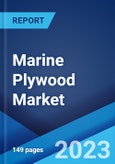Marine plywood is a good-quality, hardwood plywood made with waterproof glue. They are generally used for building boats and ships, and any other applications in which the plywood can get exposed to water. Earlier, the major applications of these plywood were confined to the marine industry. However, with increasing technological advancements, they are now also being used in several residential and commercial purposes.
Marine plywood performs well in humid and wet conditions. Moreover, unlike most woods, it also resists the bending, warping or delamination which can often result from too much moisture. This guarantees marine plywood’s durability as well as the structural strength of any construction which makes use of it. Marine plywood is often composed of several face and core veneers, with an effort to reduce the size of any gaps between the sheets. This ensures no water can become trapped. Sheets are glued together for strength and durability and a coat of water and boil proof (WBP) glue provides additional resistance to moisture.
The utilization of marine plywood in the marine industry for manufacturing stringers, floor, transom, boat cabinetry, walls, seating, etc. is anticipated to drive the marine plywood industry in the coming years. Additionaly, the growing popularity of marine plywood in other applications like building rooftops and doors in residential spaces is expected to further fuel its demand.
Key Market Segmentation:
The publisher provides an analysis of the key trends in each sub-segment of the global marine plywood market report, along with forecasts at the global and regional level from 2023-2028. The report has categorized the market based on application.Breakup by Application:
- Marine Applications
- Deck
- Dock
- Boat
- Others
- Non-Marine Applications
Breakup by Region:
- Asia Pacific
- North America
- Europe
- Latin America
- Middle East and Africa
Competitive Landscape:
The report has also analysed the competitive landscape of the market along with the profiles of the key players.Key Questions Answered in This Report:
- How has the global marine plywood market performed so far and how will it perform in the coming years?
- What are the key regional markets in the global marine plywood industry?
- What has been the impact of COVID-19 on the global marine plywood industry?
- What are the key applications in the global marine plywood industry?
- What are the various stages in the value chain of the global marine plywood industry?
- What are the key driving factors and challenges in the global marine plywood industry?
- What is the structure of the global marine plywood industry and who are the key players?
- What is the degree of competition in the global marine plywood industry?
- What are the profit margins in the global marine plywood industry?
- How is marine plywood manufactured?
Table of Contents
Methodology

LOADING...
Table Information
| Report Attribute | Details |
|---|---|
| No. of Pages | 149 |
| Published | September 2023 |
| Forecast Period | 2022 - 2028 |
| Estimated Market Value ( USD | $ 10.7 Billion |
| Forecasted Market Value ( USD | $ 16.7 Billion |
| Compound Annual Growth Rate | 7.7% |
| Regions Covered | Global |









